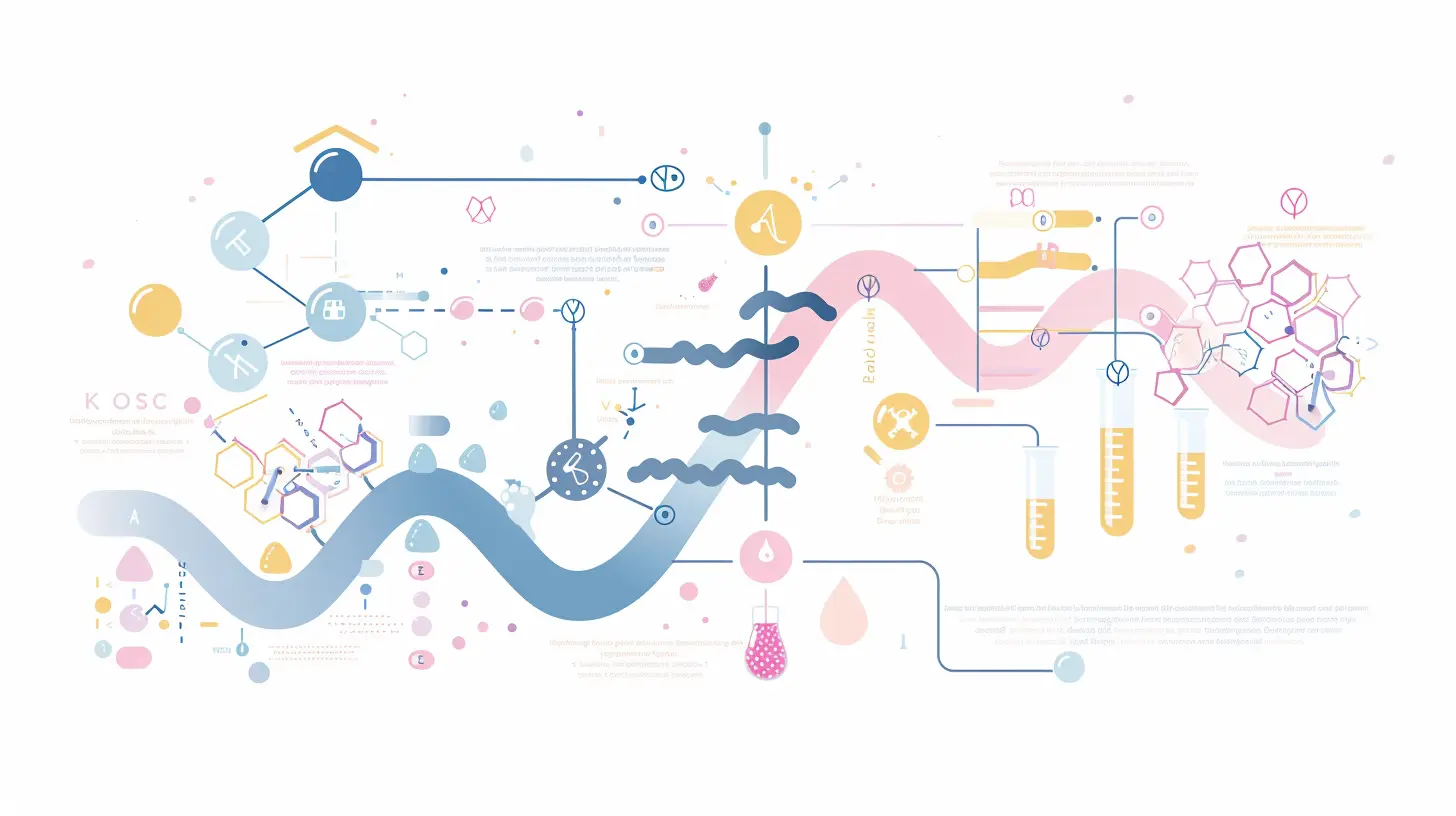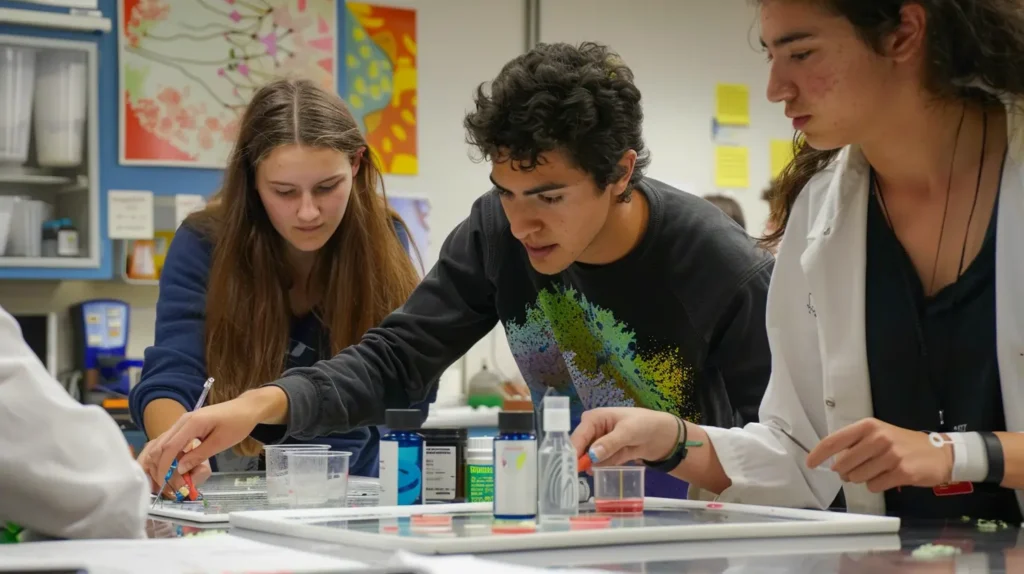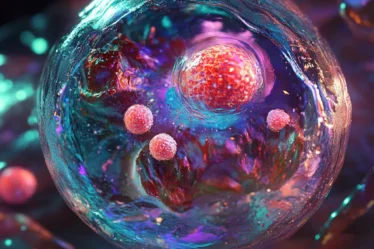
When you skip meals or exercise for hours, your body runs low on carbohydrates. To keep working, it starts producing glucose from lactate, glycerol, and amino acids. This process takes place mainly in the liver and keeps blood sugar steady during fasting or intense activity.
This study guide explains how gluconeogenesis creates glucose from non-carbohydrate sources. You will learn how lactate, glycerol, and amino acids enter the pathway, which enzymes drive the reactions, and how hormones like glucagon and insulin control the process. We also cover how fasting, exercise, and disorders affect gluconeogenesis in the liver and kidneys.
Gluconeogenesis: Quick Summary
Do you just need the basics? Here’s a simple explanation of what gluconeogenesis is:
🟠 Gluconeogenesis is the process where the liver and kidneys create glucose from non-carbohydrate sources like lactate, amino acids, and glycerol during fasting or exercise.
🟠 The Cori cycle moves lactate from muscles to the liver, where it converts back into glucose to support energy needs during physical activity.
🟠 Amino acids from muscle breakdown enter the pathway and become glucose when carbohydrates are low.
🟠 Glycerol released from fat stores converts into glucose, providing another fuel source during low energy states.
🟠 Hormones like glucagon activate gluconeogenesis, while insulin stops the process after eating to avoid wasting energy.
What is Gluconeogenesis and How Does It Create Glucose?
Gluconeogenesis is a process where your body makes glucose without using carbohydrates. This happens when you fast, exercise for a long time, or follow a low-carb diet. The liver and kidneys handle most of this work to keep your blood sugar steady.
You start with molecules your body already has. These are converted step by step into glucose:
- Lactate from muscles during exercise
- Amino acids released when proteins break down
- Glycerol from fat stored in adipose tissue
Each of these enters the gluconeogenesis pathway and goes through a series of reactions. Enzymes control every step, making sure glucose is produced when you need it. Some reactions happen inside the mitochondria, while others take place in the cytoplasm.
This process keeps your cells working when carbohydrates run out. The brain, red blood cells, and kidneys rely on this steady glucose supply to function normally.
Gluconeogenesis Uses Specific Substrates from the Body
Your body pulls from different sources when it needs to make glucose. These sources include lactate, amino acids, and glycerol. Each follows a specific path into gluconeogenesis.
Convert Lactate to Glucose with the Cori Cycle
During intense exercise, your muscles produce lactate. This happens when oxygen levels drop. Lactate moves through your blood to the liver. There, the Cori cycle converts it back into glucose. This process helps clear lactate and keeps energy flowing to your cells.
Break Down Proteins into Amino Acids for Glucose
When carbohydrates are gone, your body breaks down muscle proteins. This releases amino acids. The liver turns some of them, like alanine, into pyruvate or other intermediates. These molecules enter gluconeogenesis and become glucose.
Release Glycerol from Fat for Glucose Production
Fat stores release glycerol when your body breaks down triglycerides. Glycerol travels to the liver and turns into glucose through a few quick reactions. This provides energy when neither food nor glycogen is available. Glycerol is the only part of fat that contributes directly to making glucose.
Enzymes Drive Gluconeogenesis Step by Step
Specific enzymes guide each step of gluconeogenesis. These enzymes help convert different molecules into glucose. Most reactions happen in the liver and kidneys, moving between the mitochondria and the cytoplasm.
| Enzyme | Location | Function | Required Cofactors |
| Pyruvate Carboxylase | Mitochondria | Converts pyruvate to oxaloacetate | Biotin, ATP |
| PEP Carboxykinase (PEPCK) | Cytoplasm/Mitochondria | Converts oxaloacetate to phosphoenolpyruvate | GTP, Mg²⁺ |
| Fructose-1,6-Bisphosphatase | Cytoplasm | Removes phosphate from fructose-1,6-bisphosphate | Mg²⁺, Mn²⁺ |
| Glucose-6-Phosphatase | Endoplasmic Reticulum | Converts glucose-6-phosphate to glucose | — |
Pyruvate Carboxylase Starts the Pathway
Pyruvate enters the mitochondria and becomes oxaloacetate. Pyruvate carboxylase needs biotin and ATP to work. High levels of acetyl-CoA activate this step.
PEP Carboxykinase Forms Phosphoenolpyruvate
PEP carboxykinase changes oxaloacetate into phosphoenolpyruvate (PEP). This reaction happens in both the mitochondria and the cytoplasm.
Fructose-1,6-Bisphosphatase Removes Phosphate
Fructose-1,6-bisphosphatase removes a phosphate group, producing fructose-6-phosphate. ATP levels control this enzyme’s activity.
Glucose-6-Phosphatase Releases Free Glucose
The last step happens in the endoplasmic reticulum. Glucose-6-phosphatase converts glucose-6-phosphate into free glucose, which enters the bloodstream.
Gluconeogenesis and Glycolysis Work in Opposite Directions
Gluconeogenesis builds glucose when your body runs low on carbohydrates. Glycolysis breaks down glucose to release energy. Both pathways share some enzymes, but they never run fully at the same time. Your body switches between them depending on what you eat and how much energy you need.
Hormones control which pathway is active. This prevents waste and keeps your blood sugar steady.
Glucagon Stimulates Gluconeogenesis During Fasting
When you fast or exercise, your blood sugar drops. The pancreas releases glucagon. This hormone tells the liver to stop breaking down glucose and start making it. Glucagon lowers fructose-2,6-bisphosphate levels, slowing glycolysis. At the same time, it activates enzymes that drive gluconeogenesis.
Insulin Suppresses Gluconeogenesis After Eating
After you eat, insulin takes over. High blood sugar triggers insulin release, which blocks gluconeogenesis and speeds up glycolysis. Insulin increases fructose-2,6-bisphosphate levels, helping enzymes break down glucose. This shift allows your body to use the glucose from food instead of making it.
Hormones and Energy Status Regulate Gluconeogenesis
Your body controls gluconeogenesis based on how much energy you have and what hormones are active. This keeps blood sugar steady when you fast or exercise.
Several signals change the speed of this pathway:
- Glucagon activates the pathway when blood sugar drops. It tells your liver to start making glucose from lactate, amino acids, and glycerol.
- Insulin blocks gluconeogenesis after you eat. It shifts your body to break down glucose instead of making more.
- Acetyl-CoA stimulates pyruvate carboxylase, the first enzyme in the pathway. When acetyl-CoA levels rise, your body turns pyruvate into glucose instead of using it for energy production.
- AMP and fructose-2,6-bisphosphate inhibit the pathway. High AMP means your cells need energy, so the body slows down glucose production. Fructose-2,6-bisphosphate works the same way by stopping gluconeogenesis when glucose is available.
Hormones and energy signals change based on your needs. This system makes sure gluconeogenesis runs when glucose is low and slows down when it isn’t needed. Your body avoids wasting energy and keeps glucose levels under control.
Fasting and Exercise Trigger Gluconeogenesis
When you fast or exercise for a long time, your body runs low on carbohydrates. To keep your blood sugar steady, it starts gluconeogenesis. This process uses lactate, amino acids, and glycerol to make new glucose.
Liver and Kidneys Produce Glucose to Maintain Levels
During fasting, your liver takes the lead in making glucose. It uses stored molecules like lactate and amino acids to fuel the pathway. As fasting continues, your kidneys help by producing more glucose. Both organs work together to supply enough glucose for your brain, red blood cells, and muscles.
Exercise Increases Lactate, Fueling Glucose Formation
When you exercise, your muscles produce more lactate because they burn energy quickly. Lactate builds up in the blood and travels to the liver. There, enzymes convert lactate back into glucose through the Cori cycle. This process helps your muscles keep working during long or intense exercise. Gluconeogenesis keeps glucose levels steady until you eat again.
Why the Brain, Red Blood Cells, and Kidneys Depend on Gluconeogenesis
Some tissues rely heavily on glucose because they can’t switch to other fuels easily. Your brain needs glucose to work, especially during long fasting or intense exercise. While it can use ketone bodies after several days without food, glucose stays important for normal brain activity.
Red blood cells depend completely on glucose because they lack mitochondria. They produce energy through glycolysis and create lactate, which the liver later recycles into glucose.
The kidneys use glucose too, especially during prolonged fasting when they help the liver maintain blood sugar. They increase gluconeogenesis to supply energy for filtration and other functions.
Without this glucose supply, these tissues stop working properly. That’s why your body keeps gluconeogenesis active during fasting, exercise, or low-carb diets. It prevents low blood sugar and keeps the brain, kidneys, and red blood cells running.
Disorders Show How Gluconeogenesis Maintains Balance
When gluconeogenesis stops working, your body runs out of glucose. This leads to serious health problems that show how important this pathway is for keeping blood sugar steady.
Von Gierke Disease Stops Glucose Production
Von Gierke disease is a genetic disorder. People with this condition lack glucose-6-phosphatase in the liver. Without this enzyme, the liver cannot finish making glucose. Glycogen builds up, but glucose stays trapped. Blood sugar drops fast between meals, causing hypoglycemia, swollen liver, and growth problems.
Pyruvate Carboxylase Deficiency Causes Acidosis
Pyruvate carboxylase starts gluconeogenesis by turning pyruvate into oxaloacetate. Without this enzyme, pyruvate builds up and converts into lactate. Lactate then increases in the blood, causing lactic acidosis. This condition lowers blood pH and damages cells if left untreated.
Alcohol Intake Blocks Gluconeogenesis and Causes Hypoglycemia
Heavy alcohol use raises NADH levels in the liver. This blocks the conversion of lactate and other molecules into glucose. If you drink without eating, your body can’t make glucose. Blood sugar drops, leading to hypoglycemia. This risk increases after fasting or prolonged drinking.
Need Help with Gluconeogenesis? Book Biochemistry Tutoring That Makes Sense
Gluconeogenesis can be tough. The steps, enzymes, and hormones feel like a lot when you’re sitting there with your notes. A good private biochemistry tutor for high school helps you sort it out without the usual confusion.
In one-on-one chemistry or biology tutoring for gluconeogenesis, you’ll work through each reaction. You see how lactate turns back into glucose or how amino acids and glycerol fit into the pathway. It starts making sense once someone walks you through it, especially when textbooks skip the details you actually need.
If you’re searching for “biochemistry tutoring Birmingham” or “biochemistry tutor Sheffield”, you can book sessions that fit your schedule. No need to waste time stuck on the same page—go straight to what matters.
You’ll get practice with diagrams, pathways, and tricky reactions. A tutor points out things that help you avoid common mistakes, like where gluconeogenesis really starts or why acetyl-CoA changes the process.
Reach out today for chemistry or biology classes Leeds or private teacher Manchester. Book your session on meet’n’learn and feel more prepared for tests or class—without spending hours trying to figure it out alone.
Looking for more resources? Check out our Biology blogs for additional learning material. If you’re ready for extra help, a tutor can guide you through the most challenging topics with clarity and patience.
Gluconeogenesis: Frequently Asked Questions
1. What is gluconeogenesis?
Gluconeogenesis is a metabolic process where the liver and kidneys create glucose from non-carbohydrate sources like lactate, amino acids, and glycerol.
2. When does gluconeogenesis happen?
Gluconeogenesis happens during fasting, prolonged exercise, or low-carbohydrate diets when the body needs glucose.
3. Which organs perform gluconeogenesis?
The liver performs most gluconeogenesis, and the kidneys help during long fasting or starvation.
4. How does lactate enter gluconeogenesis?
Lactate from muscles moves to the liver through the Cori cycle, where it converts into glucose.
5. Can amino acids fuel gluconeogenesis?
Yes, amino acids from protein breakdown enter gluconeogenesis and turn into glucose.
6. Does fat contribute to gluconeogenesis?
Only glycerol from fat breakdown enters gluconeogenesis and converts into glucose.
7. How does glucagon affect gluconeogenesis?
Glucagon activates gluconeogenesis by triggering enzymes that start glucose production.
8. How does insulin affect gluconeogenesis?
Insulin blocks gluconeogenesis after eating by stopping the enzymes needed for glucose production.
Sources:
1. LibreTexts Chemistry
2. NCBI
3. Wikipedia



